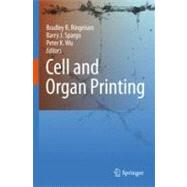
| Biological Freeform Fabrication | |
| 3D On-Demand Bioprinting for the Creation of Engineered Tissues | p. 3 |
| Ink Jet Approaches | |
| Reconstruction of Biological Three-Dimensional Tissues: Bioprinting and Biofabrication Using Inkjet Technology | p. 23 |
| Piezoelectric Inkjet Printing of Cells and Biomaterials | p. 35 |
| Modified Laser Induced Forward Transfer (LIFT) Approaches | |
| Laser-Induced Forward Transfer: A Laser-Based Technique for Biomolecules Printing | p. 53 |
| Biological Laser Printing (BioLP) for High Resolution Cell Deposition | p. 81 |
| High-Throughput Biological Laser Printing: Droplet Ejection Mechanism, Integration of a Dedicated Workstation, and Bioprinting of Cells and Biomaterials | p. 95 |
| Absorbing-Film Assisted Laser Induced Forward Transfer of Sensitive Biological Subjects | p. 115 |
| Laser Guidance Approaches | |
| Laser Guidance-Based Cell Micropatterning | p. 137 |
| Self Organization and Biological Guidance | |
| What Should We Print? Emerging Principles to Rationally Design Tissues Prone to Self-Organization | p. 163 |
| Biological Guidance | p. 173 |
| Patterning Cells on Complex Curved Surface by Precision Spraying of Polymers | p. 187 |
| Fabrication of Growth Factor Array Using an Inkjet Printer | p. 203 |
| 3-Dimensional Scaffold Cell Printing | |
| 3D-Fiber Deposition for Tissue Engineering and Organ Printing Applications | p. 225 |
| Printing Bacteria | |
| Bacterial Cell Printing | p. 243 |
| Index | p. 257 |
| Table of Contents provided by Ingram. All Rights Reserved. |
The New copy of this book will include any supplemental materials advertised. Please check the title of the book to determine if it should include any access cards, study guides, lab manuals, CDs, etc.
The Used, Rental and eBook copies of this book are not guaranteed to include any supplemental materials. Typically, only the book itself is included. This is true even if the title states it includes any access cards, study guides, lab manuals, CDs, etc.